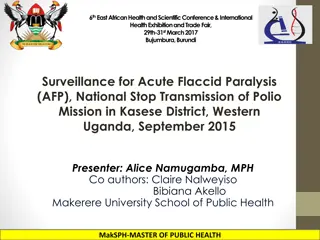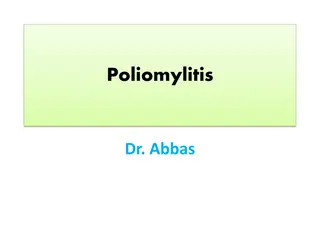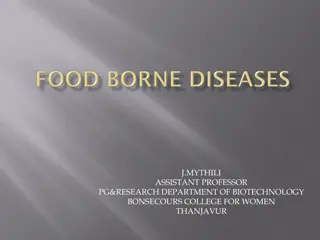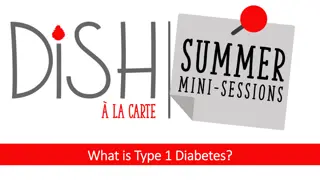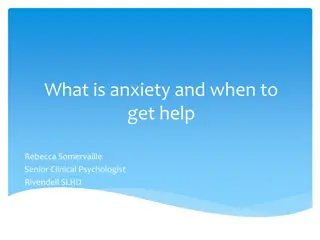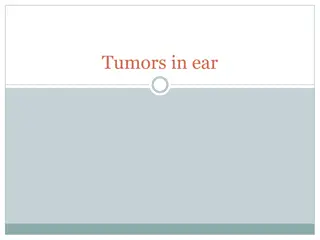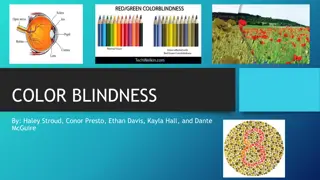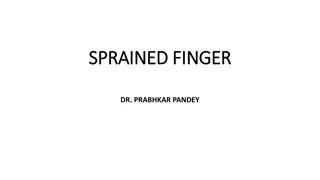Understanding Poliomyelitis: Causes, Symptoms, and Prevention
Poliomyelitis, commonly known as polio, is an infectious viral disease caused by the poliovirus. It primarily affects young children, leading to the destruction of motor neurons. The disease can manifest with varying symptoms, ranging from mild flu-like symptoms to severe paralysis. Poliovirus is transmitted through contaminated food and water, and vaccination plays a crucial role in preventing its spread and incidence. Post-polio syndrome may also develop in individuals decades after recovering from polio, leading to new signs and symptoms like muscle weakness and fatigue.
Download Presentation

Please find below an Image/Link to download the presentation.
The content on the website is provided AS IS for your information and personal use only. It may not be sold, licensed, or shared on other websites without obtaining consent from the author. Download presentation by click this link. If you encounter any issues during the download, it is possible that the publisher has removed the file from their server.
E N D
Presentation Transcript
POLIO POLIO Introduction:- Poliomyelitis is derived from two words: Polio = Grey matter Myelitis = Inflammation of the spinal cord This disease result in destruction of motor neurons caused by poliovirus. Polio is causes by virus that attacks the nerve cells of the brain and spinal cord although not all infections result in severe injuries and paralysis.
What is Poliomyelitis ? Poliomyelitis (polio) is an acute infectious viral disease caused by poliovirus, which mainly affects young children. The virus is transmitted through contaminated food and water and multiplies in the intestine, from where it can invade the nervous system. This disease result in the destruction of motor neurons caused by the poliovirus.
Name of Pathogen Poliovirus, a member of the enterovirus subgroup of the Picornaviridae family and has three serotypes: PV1, PV2 and PV3.
Symptoms Most people infected with the virus that causes polio, called poliovirus, don t get symptoms. Abortive polio About 5% of people with the poliovirus get a mild version of the disease called abortive poliomyelitis. This leads to flu-like symptoms that last 2 to 3 days. These include: Fever, Headache, Muscle aches, Sore throat, Stomachache, Loss of appetite, Nausea, Vomiting. Nonparalytic polio A more severe form of the disease, called nonparalytic polio, affects about 1% of those infected. While the illness lasts longer than a few days, it doesn t cause paralysis. Besides having more-severe flu-like symptoms, nonparalytic polio symptoms may include: Neck pain or stiffness, Severe headache, Aches or stiffness in the arms or legs.
A second phase of symptoms may follow, or a person may seem to be getting better for a few days before a second phase starts. These symptoms include: Stiffness of the spine and neck, Decreased reflexes, Muscle weakness. Paralytic polio This most serious form of the disease is rare. The disease begins much like nonparalytic polio. But it progresses to more-severe signs and symptoms, including: Intense pain, Extreme sensitivity to touch, Tingling or pricking sensations, Muscles spasms or twitching, Muscles weakness progressing to a limp paralysis.
Any combination of limbs may experience paralysis. But paralysis of one leg is most common, followed by paralysis of one arm. Depending on the severity of disease, other signs or symptoms may include: Paralysis of muscles involved in breathing, Difficulty swallowing Post-polio syndrome Post-polio syndrome is the appearance of new signs or symptoms or the progression of problems. This usually happens decades after having polio. Common signs and symptoms include: Progressive muscle or joint weakness and pain, Fatigue, Muscle wasting, Breathing or swallowing problems, Sleep-related breathing disorders, such as sleep apnea, Lowered tolerance of cold temperatures.
Subclinical Infection Symptoms Headache Slight fever Vomiting General discomfort back pain and neck pain Leg and muscle pain
Pathogenesis Enter through mouth Multiplies in oropharynx tonsil and intestine, Excreted in stool, Enter the CNS from blood, Spread along the Axon of peripheral nerves to CNS, Progress along the fibers of the lower Motor neurons spinal cord or brain.
Destroy the anterior horn cells of the Spinal Cord. Do not multiply in the muscle only muscle manifest with weakness and flaccid paralysis result is secondary. Occasionally produce : Myocarditis, Lymphatic hyperplasia.
Mode of Action This disease transmitted by droplet infection and by oral ingention. The virus is transmitted by person-to-person spread mainly through water or food contaminated by faeces. Incubation period The period of incubation varies from 3 to 30 days.
Prevention The best preventive measure for Poliomyelitis is ensuring hygiene and encouraging good sanitation practices. But, polio prevention begins with polio vaccination. Polio vaccine has been developed against all 3 subtypes of the poliovirus and is very effective in producing protective antibodies that induces immunity against the poliovirus and provides protection from paralytic polio.






